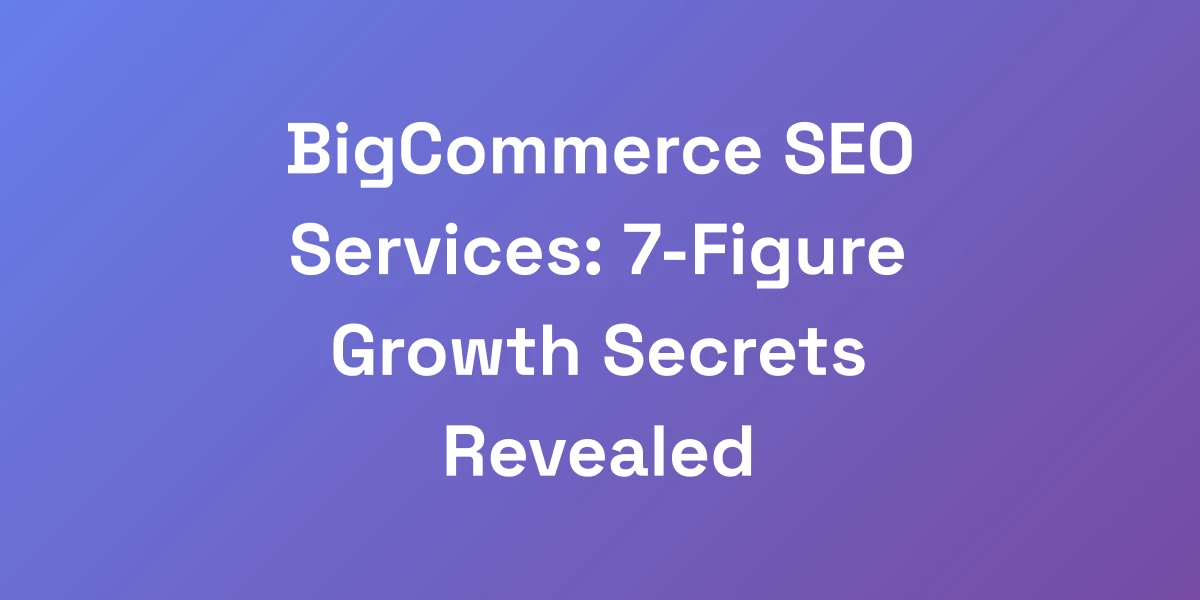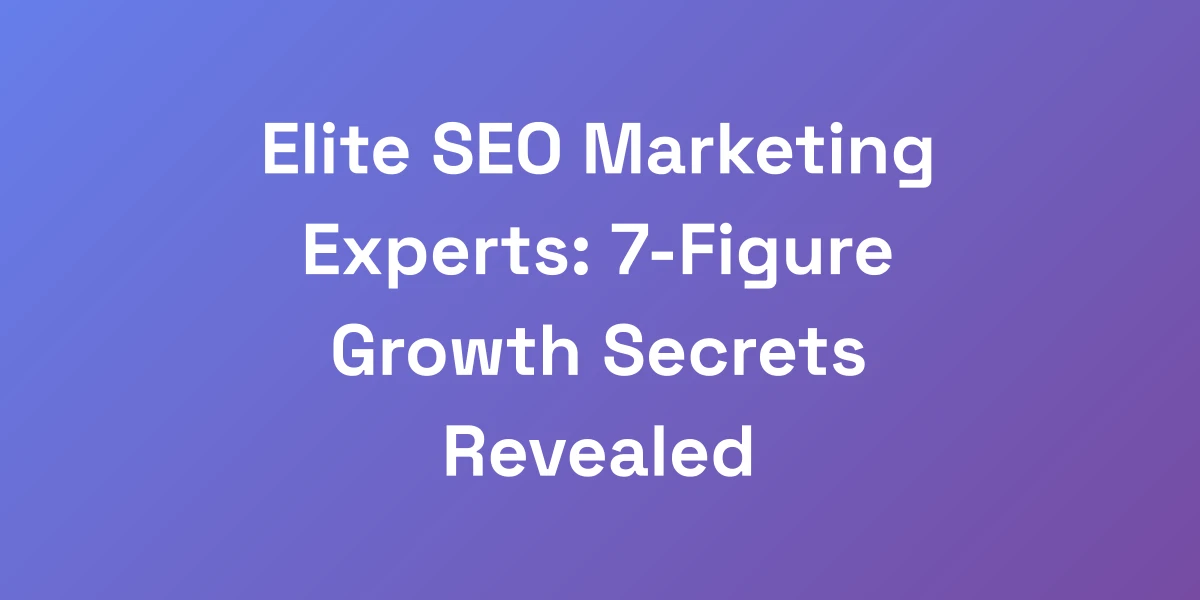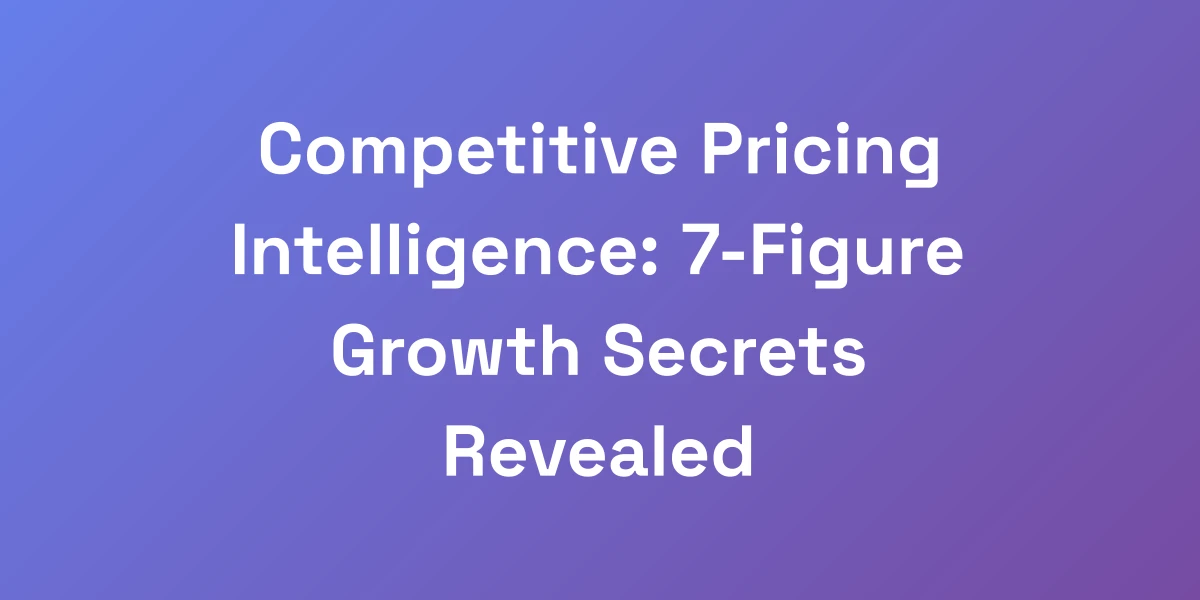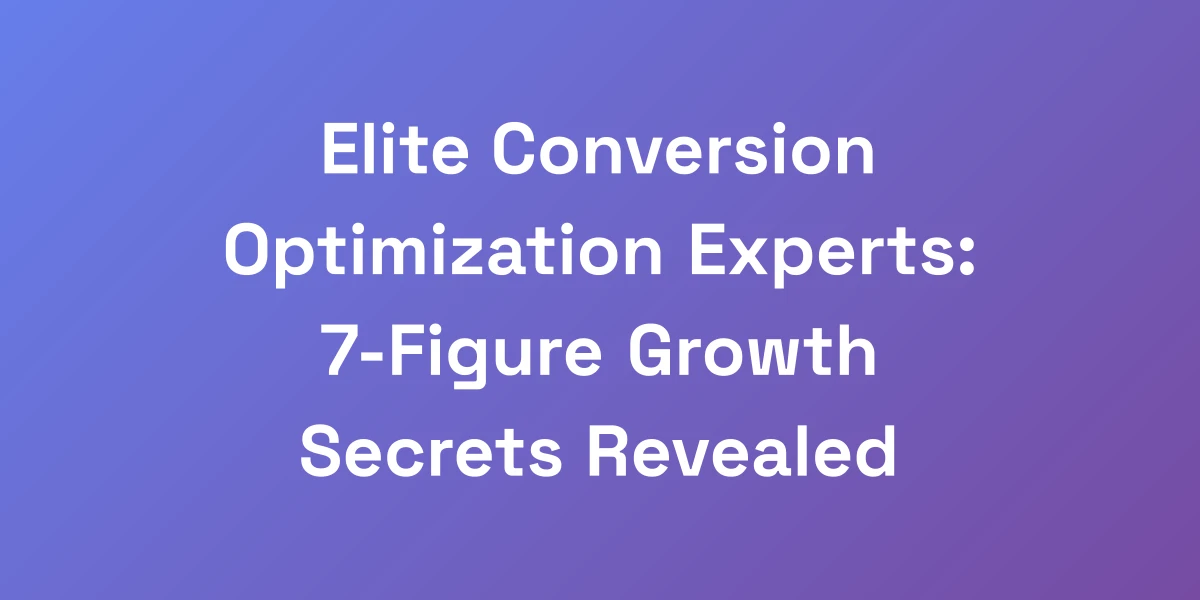
BigCommerce SEO Services: 7-Figure Growth Secrets Revealed
Mar 13, 2025 | By [email protected]
Why Most BigCommerce Stores Fail at SEO (And How to Fix It)
Let me hit you with some truth: 90% of BigCommerce store owners are leaving millions on the table because they’re doing SEO wrong. For startups, implementing effective startup SEO strategies can prevent these common pitfalls.
We’ve helped scale multiple 8-figure ecommerce brands, and here’s what we’ve learned: it’s not about random tactics – it’s about systematic execution of proven strategies.
The difference between a 6-figure and 7-figure store isn’t just better products – it’s better visibility in search results.
Today, we’re sharing the exact blueprint we use to scale BigCommerce stores through SEO.
Common SEO Mistakes Killing Your Revenue
Ever feel like you’re spinning your wheels with SEO and not seeing the cash flow you deserve?
You’re not alone. Many BigCommerce store owners make critical mistakes that sap their revenue. Let’s break down the top culprits:
- Ignoring Keyword Research: You can’t optimize what you don’t understand. Skipping thorough keyword research means missing out on high-value traffic.
- Poor On-Page Optimization: Titles, meta descriptions, and headers need to be meticulously crafted. Sloppy on-page SEO is like leaving money on the table.
- Neglecting Technical SEO: Slow load times, broken links, and poor mobile optimization can cripple your SEO efforts.
- Content is King, But Not Optimized: Content must not only be high-quality but also optimized for search intent and keywords.
- Weak Backlink Strategy: Without strong backlinks, your site struggles to gain authority and climb the rankings.
These mistakes aren’t just small missteps; they’re barriers keeping you from that 7-figure mark.
The Real Cost of Poor SEO Implementation
Imagine pouring thousands into your store without a clear path to visibility. That’s the brutal reality of poor SEO implementation.
- Lost Organic Traffic: Without proper SEO, your store remains buried in search results, missing out on potential customers.
- Decreased Conversion Rates: Traffic might come, but if your site isn’t optimized, conversions will plummet.
- Wasted Marketing Spend: Ineffective SEO means your investment in other marketing channels doesn’t yield the desired ROI.
- Reputation Damage: Poor SEO can lead to negative user experiences, tarnishing your brand reputation.
The financial implications are staggering, but the good news? These costs are avoidable with the right essential BigCommerce SEO tips.
Why Traditional SEO Agencies Don’t Get BigCommerce
Traditional SEO agencies often miss the mark when it comes to BigCommerce. Here’s why:
- Lack of Platform-Specific Expertise: BigCommerce has unique SEO features that generic agencies overlook.
- One-Size-Fits-All Approach: Successful SEO requires tailored strategies, not cookie-cutter solutions.
- Poor Integration with E-commerce: E-commerce SEO is different. Agencies not versed in BigCommerce nuances fail to optimize effectively.
- Slow Adaptation to Changes: E-commerce is dynamic. Agencies that don’t keep up with BigCommerce updates can’t deliver sustained growth.
To hit 7-figures, you need a partner who understands BigCommerce inside and out.
The Technical Foundation of Successful Stores
Think of your store’s technical foundation as the backbone of your SEO strategy.
- Site Architecture: A clean, logical structure ensures search engines can crawl and index your site efficiently.
- Mobile Optimization: With mobile searches skyrocketing, a mobile-first approach is non-negotiable.
- Page Speed: Fast-loading pages enhance user experience and boost your rankings.
- Secure HTTPS: Security is a ranking factor. Ensuring your site is secure builds trust with both users and search engines.
- Schema Markup: Implementing structured data helps search engines understand your content better, leading to rich snippets and higher click-through rates.
Without these technical elements nailed down, even the best content and strategies can fall flat.
Quick Wins vs. Long-term Strategy
Quick wins can provide immediate traffic boosts, but they’re not the foundation of sustainable growth.
- Quick Wins: These include optimizing meta tags, fixing broken links, and improving page speed. They offer immediate improvements but might not sustain long-term growth.
- Long-term Strategy: This involves comprehensive keyword research, content marketing, backlink building, and continuous optimization. These strategies build authority and ensure sustained visibility.
Balancing both approaches is essential. While quick wins can give you a fast lift, a long-term strategy ensures your growth is scalable and resilient.
The BigCommerce SEO Success Framework
Here’s the deal: successful BigCommerce SEO isn’t about following a cookie-cutter approach. It’s about implementing a proven framework that’s specifically engineered for ecommerce growth.
After analyzing hundreds of successful BigCommerce stores, we’ve identified the exact components that drive exponential growth. This isn’t theory – these are battle-tested strategies that have generated millions in additional revenue for our clients.
Technical SEO Essentials for BigCommerce
Technical SEO is the bedrock of your SEO strategy. Without it, your efforts in content and backlinks won’t reach their full potential.
- Clean URL Structures: Ensure your URLs are SEO-friendly. Avoid clutter and keep them straightforward.
- XML Sitemaps: Submit an XML sitemap to search engines to help them crawl your site more efficiently.
- Robots.txt Optimization: Properly configure your robots.txt to control which pages search engines should crawl.
- Page Speed Optimization: Utilize BigCommerce’s built-in CDN and compress images to enhance load times.
- Mobile Responsiveness: Ensure your theme is mobile-responsive. Test using Google’s Mobile-Friendly Test tool.
- Secure HTTPS: Maintain a secure site by using HTTPS. It’s a critical ranking factor.
Addressing these technical aspects lays a solid foundation for all your SEO efforts.
Content Architecture That Converts
Content is more than just words on a page. It’s the vehicle that drives traffic and converts visitors into customers through content marketing for small businesses.
- Content Clusters: Organize your content into clusters around central themes and keywords. This boosts authority on specific topics.
- Strategic Keyword Placement: Integrate keywords naturally into your content, titles, and headers to enhance relevance.
- Engaging Product Descriptions: Craft compelling product descriptions that address customer pain points and highlight benefits.
- Blogging with Purpose: Create valuable blog content that answers customer questions and drives organic traffic.
- Multimedia Integration: Use images, videos, and infographics to make your content more engaging and shareable.
- User Intent Focus: Align your content with the search intent of your target audience. Are they looking to buy, learn, or compare?
Building a robust content architecture ensures that your site is both user-friendly and SEO-optimized.
Product Page Optimization Tactics
Your product pages are the heart of your BigCommerce store. Optimizing them can significantly impact your SEO and sales.
- Unique Product Descriptions: Avoid duplicate content by crafting unique, detailed descriptions for each product.
- High-Quality Images: Use optimized, high-resolution images with descriptive alt texts to improve both SEO and user experience.
- Customer Reviews: Incorporate user-generated content like reviews and ratings to build trust and add fresh content.
- Schema Markup: Implement product schema to enhance search result listings with rich snippets, including ratings and prices.
- Internal Linking: Link to related products and categories to improve navigation and SEO.
- Call-to-Action Buttons: Strategically place CTAs to guide users towards making a purchase.
These tactics not only improve your SEO but also enhance the user experience, driving higher conversions.
Category Page Revenue Drivers
Category pages are crucial for organizing your products and guiding users through your store.
- Optimized Titles and Meta Descriptions: Craft compelling titles and meta descriptions that include target keywords.
- Filter and Sort Options: Enhance user experience by allowing customers to filter and sort products based on their preferences.
- Rich Content: Add informative content to category pages that addresses user needs and incorporates keywords.
- Visual Hierarchy: Use a clear and logical layout to guide users through the category seamlessly.
- Cross-Selling Techniques: Suggest related products to increase average order value.
- Analytics Tracking: Monitor category page performance to identify areas for improvement.
Optimizing category pages ensures that users can find what they’re looking for quickly, boosting both SEO and sales.
Advanced Schema Implementation
Schema markup is a powerful tool that can enhance your search engine visibility through rich snippets.
- Product Schema: Include details like price, availability, and reviews to make your listings more informative.
- Breadcrumb Schema: Help search engines understand your site structure and improve navigation in search results.
- Review Schema: Display star ratings and reviews directly in search results to attract clicks.
- FAQ Schema: Answer common questions directly in search results, providing value to users before they visit your site.
- Video Schema: Enhance video content with schema to improve visibility in video search results.
- LocalBusiness Schema: If applicable, use local business schema to attract local traffic and improve local SEO.
Implementing advanced schema can give you a competitive edge, making your listings stand out in crowded search results.
Mobile Optimization Strategies
With over half of all web traffic coming from mobile devices, mobile optimization is non-negotiable.
- Responsive Design: Ensure your BigCommerce theme is fully responsive, adapting seamlessly to different screen sizes.
- Accelerated Mobile Pages (AMP): Implement AMP to enhance mobile load times and user experience.
- Touch-Friendly Navigation: Design navigation elements that are easy to use on touchscreens.
- Mobile-Optimized Checkout: Simplify the checkout process for mobile users to reduce cart abandonment.
- Image Optimization: Compress images to improve load times without sacrificing quality.
- Test Regularly: Use tools like Google’s Mobile-Friendly Test to ensure your site performs well on mobile devices.
Optimizing for mobile not only improves user experience but also boosts your rankings in mobile search results.
Maximizing BigCommerce’s Built-in SEO Features
Listen carefully: BigCommerce gives you a Ferrari of SEO features, but most store owners drive it like a Toyota.
We’re going to show you how to unlock the full potential of every built-in optimization tool.
We’ve generated over $100M in ecommerce sales by maximizing these exact features. The platform’s native capabilities, when properly leveraged, can give you an unfair advantage over your competition.
URL Structure Optimization
Your URL structure is like the roadmap for search engines and users navigating your site.
- Keep URLs Clean and Descriptive: Use readable URLs that include target keywords.
- Avoid Unnecessary Parameters: Simplify URLs by removing unnecessary query parameters.
- Use Hyphens to Separate Words: Hyphens improve readability and SEO.
- Implement Consistent Naming Conventions: Consistency helps in maintaining site structure and improves crawlability.
- Canonical URLs: Use canonical tags to prevent duplicate content issues.
- Redirects: Set up 301 redirects for any URL changes to maintain SEO value.
A well-structured URL system enhances both user experience and search engine rankings.
Advanced Meta Tag Configuration
Meta tags are your store’s first impression in search results.
- Title Tags: Craft unique, keyword-rich titles for each page. Keep them under 60 characters.
- Meta Descriptions: Write compelling meta descriptions that incorporate target keywords and encourage clicks.
- Meta Keywords: While not a major ranking factor, ensure your meta keywords align with your content.
- Open Graph Tags: Optimize OG tags for better social media sharing and engagement.
- Twitter Cards: Enable Twitter Cards to enhance your presence on Twitter.
- Dynamic Meta Tags: Utilize BigCommerce’s dynamic variables to automate meta tag creation.
Advanced meta tag configurations ensure that your pages are primed for maximum visibility and engagement.
Internal Linking Architecture
Internal links are the glue that holds your website together.
- Logical Structure: Create a hierarchical link structure that reflects the importance of pages.
- Anchor Text Optimization: Use descriptive anchor texts that include relevant keywords.
- Link Depth: Ensure important pages are no more than three clicks away from the homepage.
- Contextual Linking: Link to related content within your product descriptions and blog posts.
- Broken Link Audits: Regularly check for and fix broken internal links to maintain site health.
- Automated Linking Tools: Use tools to automate and optimize your internal linking strategy.
An effective internal linking strategy improves navigation, user experience, and SEO performance.
Image Optimization at Scale
Images are a critical component of e-commerce, but they can slow down your site if not optimized properly.
- Compress Images: Use tools to compress images without compromising quality.
- Descriptive File Names: Rename images with descriptive, keyword-rich file names.
- Alt Text: Implement descriptive alt text for all images to improve accessibility and SEO.
- Responsive Images: Use responsive images to ensure they load quickly on all devices.
- Lazy Loading: Implement lazy loading to defer off-screen images, improving load times.
- Image Sitemaps: Create image sitemaps to help search engines index your images effectively.
Optimizing images at scale ensures that your site remains fast and visually appealing, enhancing both SEO and user experience.
Custom Field Utilization
Custom fields allow you to add additional information to your products, enhancing both SEO and user experience.
- Implement Custom Fields: Use custom fields to include extra details like product dimensions, materials, and more.
- Enhance Structured Data: Incorporate custom fields into your schema markup for richer search results.
- Dynamic Content: Use custom fields to generate dynamic content on product pages.
- Personalization: Leverage custom fields to personalize the shopping experience for users.
- SEO Metadata: Utilize custom fields to add unique meta tags for better optimization.
- Integration with Third-Party Tools: Use custom fields to integrate with other SEO and marketing tools.
By fully utilizing custom fields, you can add depth to your product pages, improving both SEO and customer engagement.
Automated SEO Features
Automation can streamline your SEO efforts, saving time and ensuring consistency with automated SEO tools.
- Automated Meta Tags: Use AI-powered tools to generate and optimize meta titles and descriptions across your site.
- Bulk Content Optimization: Automate the process of optimizing product descriptions, category pages, and blog posts for relevant keywords.
- Dynamic URL Management: Automatically create and manage SEO-friendly URLs, ensuring consistency and avoiding duplication.
- Sitemap Generation: Automatically generate and update XML sitemaps to ensure search engines can effectively crawl your site.
- Schema Markup: Implement structured data at scale to enhance search engine understanding and improve rich snippet potential.
Leveraging automated SEO features, including SEO automation, can help maintain high levels of optimization without the need for constant manual intervention.
Content Strategy That Drives 7-Figure Growth
Want to know what separates 7-figure stores from the rest? It’s not just products – it’s strategic content deployment.
We’re talking about content that doesn’t just rank, but converts visitors into buyers.
We’ve developed a proprietary content framework that has consistently delivered 300%+ ROI for our BigCommerce clients. This isn’t about blogging – it’s about creating strategic assets that drive qualified traffic and sales.
Product Description Templates
Consistent, high-quality product descriptions are crucial for both SEO and conversions.
- Template Structure: Use a structured format that includes key elements like features, benefits, and specifications.
- Keyword Integration: Seamlessly incorporate target keywords without keyword stuffing.
- Unique Selling Points: Highlight what sets your product apart from competitors.
- Storytelling: Engage customers with a compelling narrative around each product.
- Clear CTAs: Include strong calls-to-action to guide users towards purchases.
- SEO-Friendly Formatting: Use headings, bullet points, and short paragraphs for readability.
Using product description templates ensures consistency and quality across all product listings, enhancing both SEO and user experience.
Category Page Content Strategy
Category pages aren’t just listings of products; they’re opportunities to engage and convert.
- Informative Introductions: Start with a compelling introduction that incorporates target keywords.
- User Intent Alignment: Ensure content matches what users are searching for within the category.
- SEO-Optimized Headers: Use headers to break up content and include relevant keywords.
- Engaging Multimedia: Incorporate images, videos, and infographics to enrich the content.
- Internal Links: Link to related products and relevant blog posts to keep users engaged.
- Conversion Elements: Include elements like testimonials, trust badges, and clear CTAs to drive conversions.
A robust category page content strategy enhances SEO while providing value to users, increasing the likelihood of conversions.
Blog Content ROI Maximization
Blogging can be a powerhouse for driving traffic and establishing authority if done right.
- Strategic Topic Selection: Choose topics that align with your audience’s interests and search intent.
- Keyword-Rich Content: Integrate strategically researched keywords to boost search rankings.
- Value-Driven Posts: Focus on creating content that provides real value, solving problems for your audience.
- Consistent Publishing Schedule: Maintain a regular posting schedule to keep your audience engaged and attract search engines.
- Promote Across Channels: Share your blog posts on social media, email newsletters, and other platforms to maximize reach.
- Measure and Optimize: Use analytics to track performance and refine your strategy based on data.
Maximizing the ROI of your business blogging ensures that every post contributes to your overall SEO and revenue goals.
User-Generated Content Integration
User-generated content (UGC) can be a game-changer for SEO and building trust.
- Customer Reviews: Encourage customers to leave reviews, which add fresh content and improve credibility.
- Testimonials: Showcase testimonials to build trust and provide social proof.
- Social Media Integration: Feature user-generated content from social media to enhance authenticity.
- Q&A Sections: Implement Q&A sections where users can ask and answer questions about products.
- Interactive Content: Use quizzes, polls, and surveys to engage users and generate content.
- Content Moderation: Ensure all UGC is moderated to maintain quality and relevance.
Integrating UGC enriches your site with diverse content, improving SEO while fostering a community around your brand.
Content Scalability Systems
Scaling your content efforts ensures sustained growth without becoming overwhelmed.
- Content Management Systems: Use robust CMS tools to organize and manage your content efficiently.
- Content Calendars: Plan and schedule your content in advance to maintain consistency.
- Delegation: Assign specific roles for content creation, editing, and publishing to streamline workflows.
- Repurposing Content: Transform existing content into different formats like videos, infographics, and podcasts.
- Automation Tools: Utilize automation for repetitive tasks like publishing and social sharing.
- Performance Tracking: Continuously monitor content performance to identify what works and scale accordingly.
Implementing scalable content systems allows your SEO strategy to grow seamlessly alongside your business.
Conversion-Focused Copy
Your content should not only attract visitors but also convert them into customers.
- Clear Value Proposition: Clearly communicate the benefits and unique selling points of your products.
- Persuasive Language: Use compelling language that motivates users to take action.
- Strong Call-to-Actions: Include clear and direct CTAs that guide users towards conversions.
- Address Pain Points: Highlight how your products solve specific problems for your customers.
- Trust Elements: Incorporate trust signals like guarantees, certifications, and customer testimonials.
- Storytelling: Engage users with relatable stories that connect them emotionally to your brand.
Focusing on conversion-driven copy ensures that your SEO efforts translate directly into revenue.
Measuring and Scaling Your SEO Success
Here’s the brutal truth: if you can’t measure it, you can’t improve it.
We’re going to show you the exact metrics that matter for BigCommerce SEO success.
Forget vanity metrics – we’re focusing on numbers that directly impact your bottom line.
We’ve used these same measurement systems to scale multiple stores from 6 to 7 figures in less than 12 months.
Key Performance Indicators
Identifying the right KPIs is crucial for tracking your SEO effectiveness.
- Organic Traffic: Monitor the number of visitors coming from search engines.
- Keyword Rankings: Track the positions of your target keywords in search results.
- Conversion Rate: Measure the percentage of visitors who make a purchase.
- Bounce Rate: Analyze the percentage of visitors who leave without interacting.
- Average Session Duration: Gauge how long users stay on your site.
- Page Load Time: Ensure your site loads quickly to prevent user drop-off.
Focusing on these KPIs allows you to assess the real impact of your SEO strategies on your business.
Analytics Setup and Tracking
Proper analytics setup is the backbone of effective SEO measurement.
- Google Analytics: Implement GA4 to track detailed user behavior and traffic sources.
- Google Search Console: Use GSC to monitor search performance and identify issues.
- BigCommerce Built-in Analytics: Utilize BigCommerce’s native analytics for ecommerce-specific insights.
- Event Tracking: Set up event tracking for key actions like add-to-cart and purchases.
- Goal Setup: Define and track goals that align with your business objectives.
- Regular Audits: Conduct regular analytics audits to ensure data accuracy and integrity.
With a robust analytics setup, you can gain actionable insights to refine and enhance your SEO strategies.
ROI Calculation Methods
Understanding the return on your SEO investments is essential for long-term success.
- Revenue Attribution: Track how much revenue is directly generated from organic traffic.
- Cost Analysis: Compare the cost of your SEO efforts against the revenue they generate.
- Lifetime Value (LTV): Calculate the long-term value of customers acquired through SEO.
- Customer Acquisition Cost (CAC): Determine how much it costs to acquire each customer via SEO.
- ROI Formula: (Revenue from SEO – Cost of SEO) / Cost of SEO * 100 to get the percentage ROI.
- Attribution Models: Use attribution models to allocate revenue correctly across multiple touchpoints.
Accurate ROI calculation helps you understand the effectiveness of your SEO efforts and make informed investment decisions.
Scaling Successful Campaigns
Once you identify what works, scaling those campaigns can exponentially boost your growth.
- Duplicate Successful Strategies: Apply proven tactics across more products and categories.
- Expand Keyword Targets: Broaden your keyword strategy to include longer-tail and related keywords.
- Increase Content Production: Scale up content creation efforts to cover more topics and attract more traffic.
- Invest in Backlink Acquisition: Amplify successful link-building strategies to enhance authority.
- Optimize for New Markets: Target new geographic or niche markets with tailored SEO strategies.
- Leverage Automation: Use automation tools to handle repetitive tasks, freeing up resources for strategic scaling.
Scaling your successful campaigns ensures that your growth is not just a one-time spike but a consistent upward trajectory.
Performance Monitoring Tools
Utilizing the right tools can provide real-time insights into your SEO performance.
- Google Analytics and Search Console: Essential for tracking traffic and search performance.
- Ahrefs or SEMrush: Comprehensive tools for keyword research, backlink analysis, and competitor monitoring.
- BigCommerce Analytics: Ecommerce-focused analytics for sales and conversion tracking.
- Hotjar or Crazy Egg: Tools for understanding user behavior through heatmaps and session recordings.
- Screaming Frog: A powerful crawler for analyzing site architecture and identifying technical SEO issues.
- Google Data Studio: Create customized dashboards to visualize and report on your SEO metrics.
Equipping yourself with these tools allows for comprehensive performance monitoring and timely adjustments.
Growth Forecasting Models
Predicting future growth based on current data helps in strategic planning and resource allocation.
- Trend Analysis: Examine historical data to identify trends in traffic, conversions, and revenue.
- Benchmarking: Compare your metrics against industry standards to gauge performance.
- Predictive Analytics: Use statistical models to forecast future SEO performance based on current trends.
- Scenario Planning: Develop different growth scenarios based on various strategic options.
- Revenue Projections: Estimate future revenue based on projected traffic and conversion rates.
- Resource Planning: Allocate resources effectively based on growth forecasts to maximize ROI.
Implementing growth forecasting models ensures that your SEO strategy is forward-thinking and aligned with your business goals.
Conclusion
We’ve navigated through the intricate world of BigCommerce SEO, uncovering the strategies that separate the 7-figure stores from the rest.
From avoiding common SEO pitfalls to implementing a robust success framework, every step is designed to elevate your store’s visibility and revenue.
Remember, it’s not just about being seen—it’s about being seen by the right people at the right time with the right message.
Ready to take your BigCommerce store to the next level? Implement these SEO strategies and watch your revenue soar.
Have questions or need a tailored SEO strategy for your store? Contact us today and let’s unlock your store’s full potential together.
What’s your biggest SEO challenge right now? Share your thoughts in the comments below—we’re here to help!








